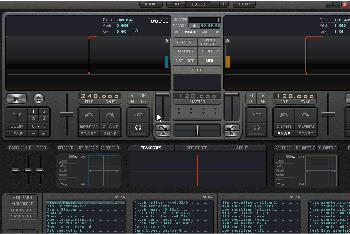

After noise reduction and processing, the point cloud data collected by the laser scanner can represent the specific percentage of warpage. Laser scanning depth image data could be utilized to quantify the dimensional changes of the part. After amplifying and filtering the AE signal, the frequency and time domain characteristics are retrieved and trained in the machine learning model. It is capable of precisely displaying real-time part characteristics. The AE signal generated during the printing process indicates variations in vibration caused by changes in the part's internal tension. This study created a real-time monitoring system based on acoustic emission (AE) and laser scanning technology to monitor the warpage defect in fabricated parts throughout the printing process. Numerous parameters can impact the printing process's accuracy and stability.

On the other hand, Commercial FFF machines have limits on process dependability and product quality. The results revealed the potential of producing cost-effective and geometrically complex parts, such as molds or tools with internal cooling channels, that implement mechanically high-performance surfaces.įused Filament Fabrication (FFF) is a widely used additive manufacturing method for obtaining prototypes with complex structures. Finally, hardness tests were performed on both the as-deposited and heat-treated coatings to confirm the high mechanical performance of the final component surface. In addition, an in-depth metallurgical analysis (microstructural and chemical) of the interface between the DED coating and the L-PBF component was carried out. The quality of the manufactured coatings was assessed in-process through the implementation of an optical monitoring system and real-time image processing.

From this perspective, this study focuses on the manufacturing of a directed energy deposition (DED) coating by using 18Ni (300) maraging steel powder on AISI 316L components realized by laser-powder bed fusion (L-PBF), in order to assess the production of components with high geometrical complexity combined with high mechanical surface properties in selected areas. However, scientific gaps persist on the feasibility of realizing a coated component manufactured by using various materials processed by combining different AM processes. The capabilities of additive manufacturing (AM) techniques have been extensively examined in the literature. It´s important to say that the choice of technology is directly dependent on the particular application being planned: first the application, then the technology.
#DECKADANCE 2.2 PROFESSIONAL#
This paper will expand upon the structural design of the machines, their history, classification, the alternatives existing today, materials used and their characteristics, the technology limitations and also the prospects that are opening up for different technologies both in the professional field of innovation and the academic field of research. Additive manufacturing has several alternatives ranging from simple RepRap machines to complex fused metal deposition systems. Additive manufacturing is seen as being one of the major revolutionary industrial processes of the next few years. The following may also be achieved according to field of application: lighter weight products, multi-material products, ergonomic products, efficient short production runs, fewer assembly errors and, therefore, lower associated costs, lower tool investment costs, a combination of different manufacturing processes, an optimised use of materials and a more sustainable manufacturing process. Additive manufacturing techniques provide major competitive advantages due to the fact they adapt to the geometrical complexity and customised design of the part to be manufactured. The use of conventional manufacturing methods is mainly limited by the size of the production run and the geometrical complexity of the component, and as a result we are occasionally forced to use processes and tools that increase the final cost of the element being produced.


 0 kommentar(er)
0 kommentar(er)
